0564 An interventional sign-vehicle (SVi) activates what I think2a.
So, what is the nature of what I think2a?
0565 Can I compare the scrappy player level with the content level of the scholastic interscope for how people think(elaborated in A Primer on the Individual in Community, by Razie Mah, available at smashwords and other e-book venues, as well as Looking at John Deely’s Book (2010) “Semiotic Animal” appearing in Razie Mah’s blog in October 2023)?
Here is a picture.
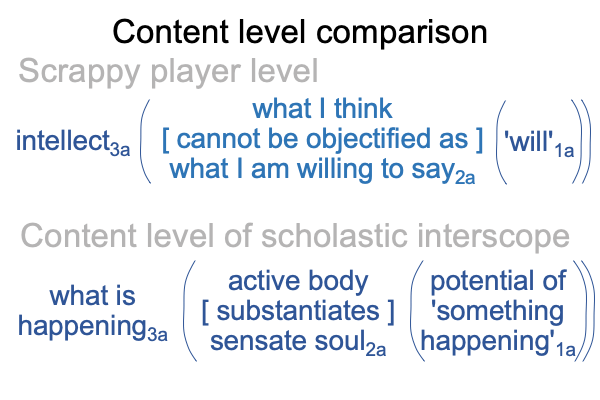
0566 Active body2a corresponds to the body in action. The five senses are active. So are proprioceptors that report the status of all sorts of body functions.
Sensate soul2a corresponds to feelings and sensations and qualia. The smell of a rose triggers a memory… not a complete memory, but a reminiscence that cannot be put into words. Yet, spoken words may be conjured, especially if someone is at hand to help with one’s vocabulary. A rose by any other name would smell as sweet.
What I sense [substantiates] what I feel2a in the normal context of what is happening3a operating on the potential of ‘something’ happening2a.
0567 So, maybe, stagecraft presents the scrappy player with what is happening3a,1a and what I think2a corresponds to the entire content level of the scholastic interscope for how people think.
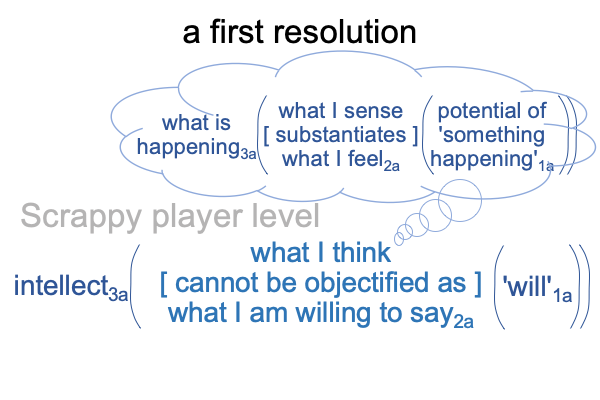
0568 Why stop there?
Why not have what I think2a correspond to the entire scholastic interscope?
Here is a picture of the interscope for what I think2a.
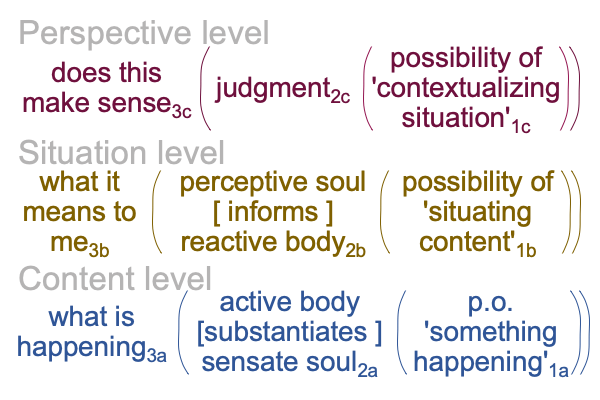
0569 Surely, this fits better. What I think2a cannot be limited to sensations and feelings2a. Can it? The subscripts are a little confusing here, because an element in the interscope for the post-truth condition2a now contains the entire interscope for how humans think, according to pre-modern scholastics.
0570 Let me dwell on the scholastic interscope for the moment.
0571 The three normal contexts constitute a perfectly (or completely) appropriate hierarchy. Does this make sense3ccontextualizes what it means to me3b, while what it means to me3b situates what is happening3a. Is there a name for a transcendental that brings all these normal contexts into alignment. Perhaps, the labels, “prudence” or “temperance”, apply.
0572 The three potentials also constitute a perfectly appropriate hierarchy. Contextualizing the situation1c should put situating content1b into perspective, just as situating content1b should tell me the meaning, presence and message of ‘something’ happening to me1a.
The key point is “me”. If I want to figure out what is happening3a, then I must be true to myself. I cannot deny sensation2a. I cannot pick and choose my perceptions2b. I cannot refuse the opportunity to find the context where sensation and perception both make sense2c. Is there a name for a transcendental that brings all these potentials into alignment. Perhaps, the labels, “truth” and “beauty”, apply.
0573 Finally, the three actualities constitute a completely integrated hierarchy.
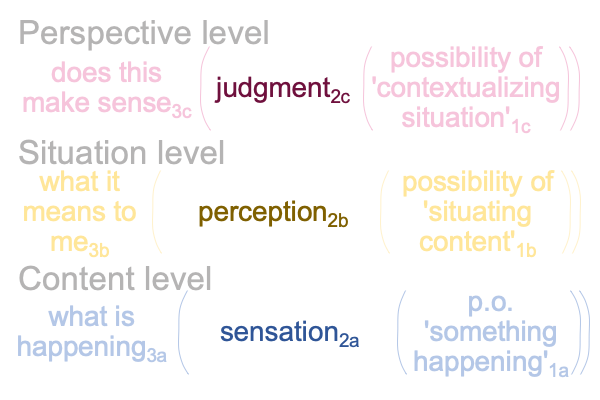
0574 There is more.
On one hand, the actualities may be pictured as a virtual nested form.
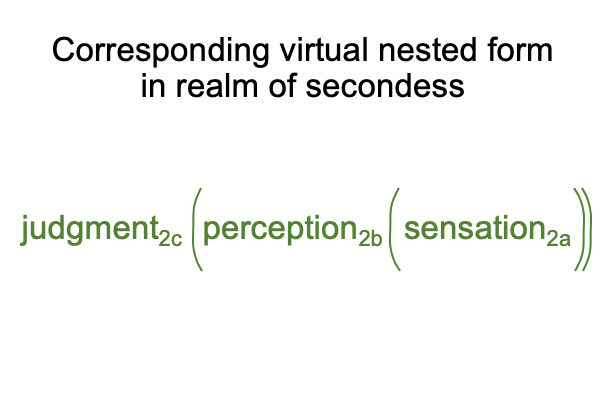
I will use this nested form to portray what I think2a in the post-truth interscope.
0575 On the other hand, the perspectivec level actuality is itself a triadic relation that brings the situationb level into relation with the contenta level, not as a virtual category-based nested form, but as a judgment.
A judgment is a triadic relation composed of three elements: relation, what is, and what ought to be. If each of these elements is imbued with one of Peirce’s three categories, then the judgment becomes actionable.
0576 Here is a picture for philosophical judgment, whose transcendental is wisdom.
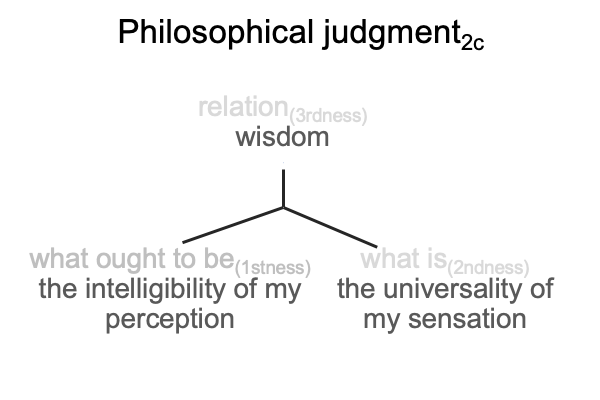
Wisdom (relation, thirdness) brings the universality of sensation (what is, secondness) into relation with the intelligibility of perception (what ought to be, firstness).
0577 At this point, what I think2a seems to be an incredibly nuanced element in the post-truth condition.
If, what I think2a corresponds to the scholastic interscope for how humans think, then the transcendentals of prudence, temperance, truth, beauty and wisdom are built into how I think2a. It is like a gift from the One Who Gives, Without Us Knowing Why. This gift is given in the Lebenswelt that we evolved in. So, the embodied transcendentals are adaptations to a world that no longer exists. Today, the followers of Thomas Aquinas might label that world, original justice,compared to our current Lebenswelt of original sin.
0578 Indeed, it seems that the interscope for the post-truth condition aims to put what I think2a into a box, so that my own mind becomes the corral for the sheep that I have become.
